You might recall that we had a short preview of the Riddara RD6 back in the April 2025 issue of Motor… That special test vehicle was a 200-kilowatt, rear-wheel drive variant that surprised us with its nippiness, ride comfort and practicality. Now, Evolution Auto, the authorized distributor of Riddara have brought down trucks in 2WD and 4WD guise, and we’re lucky to be behind the wheel of the latter today. Strap in, because there’s a lot that this smart-looking truck can offer.
One headline figure that we’re told is a 1,000-kilogram payload for the truck bed! Impressive indeed. But who is Riddara? Well, Riddara, known as Radar Auto in China, is an EV-only subsidiary of Chinese automotive giant Geely Auto. Other brands under the Geely Auto umbrella include, well, Geely, Zeekr and Lynk & Co. Furthermore, Geely maintains ownership shares in Volvo Cars, Proton, and Lotus. So, they’re pretty solid, as you can see. In fact, many Chinese automakers have histories dating back fifty or so years, so they aren’t exactly newcomers to the game.
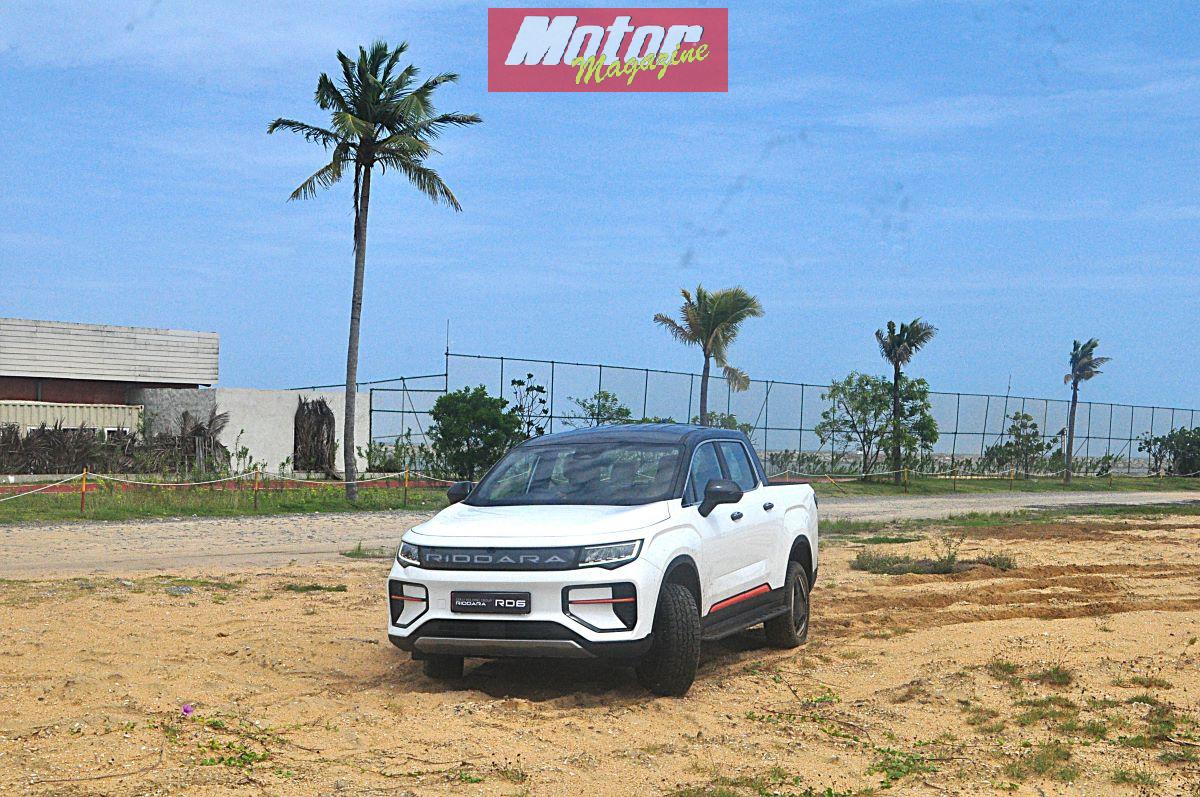
Exterior
The Riddara RD6 is of course your traditional double cab style pickup truck, and its silhouette doesn’t differ from other competitors. As a prominent European automotive designer once commented, there isn’t a lot you can do with a pickup truck in terms of overall shape. One area that you can really make a statement with is the front, and Riddara has definitely done that. The bold RIDDARA script at the front is not only highly visible at day, but LED-illuminated when you switch on the vehicle’s slimline LED headlamps. Then, you’ve got large air dams in the front bumper, with orange-red accents on our White Cloud 4WD tester. The other colours are Black Night, Serene Blue, Rock Grey and Nordic Green, the last of which is only available for four-wheel drive variants.
Moving on, I’m glad to notice 18-inch wheels with aero covers, wrapped in 235/60 tires, which are definitely good for comfort. Larger wheels and low-profile tires are all eye candy but do nothing for ride comfort. Riddara has erred on the side of sensibility here and I’m glad for that. The side profile of our tester continues with the orange-red accents, some body sculpting, and proper door handles. None of that motorized pop-out jazz, and I’m happy about that because I prefer a good old chunky door handle to grab and pull any day. Meanwhile, the rear features a conventional tailgate that’s not powered but has gas struts to assist with operation. Moreover, the rear lamp design looks like it’s been lifted straight from an SUV, and Riddara has definitely tried to make it distinctive from other pickup trucks.
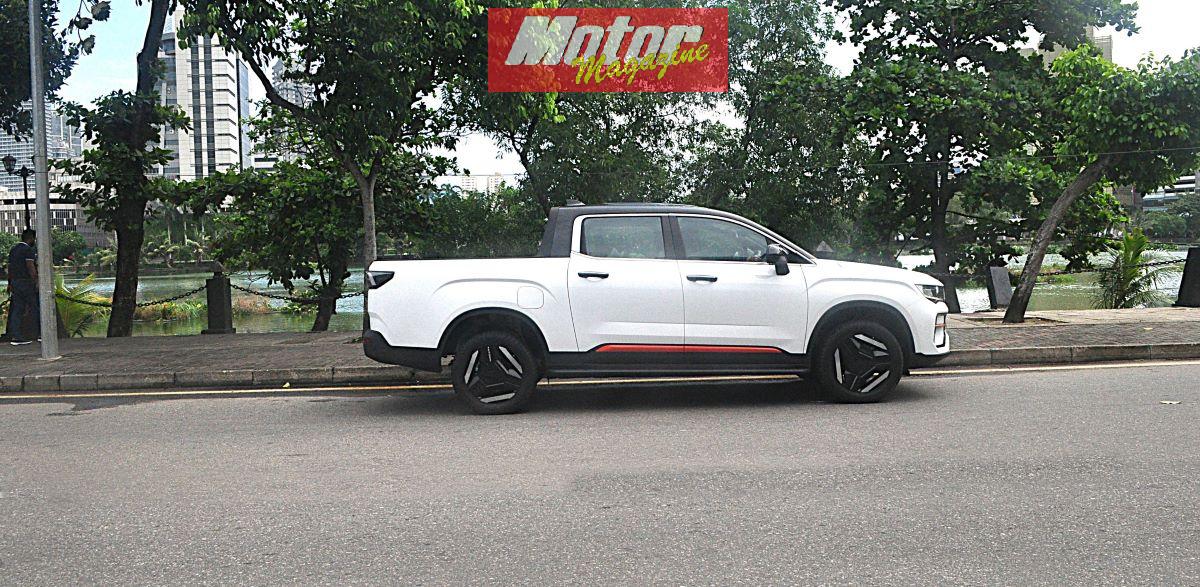
Mech & Tech
In other markets, the Riddara comes with dual electric motors that make up to 298 kilowatts or a solid 400 horsepower. These variants also boast 4.5-second 0-100 times. Sadly, thanks to our ridiculous taxation policies that tax EVs for every kilowatt produced by their motors, we’ve got just 100 kilowatts or 134 horsepower to play with. The power figure is the same regardless of whether you select a 2WD or 4WD RD6. However, 2WD variants have a decent 385Nm of torque while 4WD variants enjoy a nicer 595Nm.
The RD6 comes with two battery pack choices. The entry
level 2WD variant has got a 63 kilowatt-hour pack, all others get a larger 73
kilowatt-hour pack. A 6.6 kilowatt-hour charger is supplied with the truck, and
DC fast charging is supported as well.
Meanwhile, we’ve got four-wheel disc brakes to augment the motor’s regenerative capabilities for braking. There are three levels of regeneration that can be selected by the driver. Steering comes via an electrically assisted rack system as is commonplace now. The typical MacPherson Strut system forms the basis of the front suspension, while the rear is a multi-link independent setup.

Driving Experience
We’ve got powered front seats, so getting comfortable
is very easy. Once settled in, I am glad to note the presence of physical
controls for the climate control system. Of course, most other functions
(including activating the ventilated seats) are done via the touchscreen.
You’ve also got a nice digital gauge cluster that’s designed to be as
unobtrusive and uncluttered as possible.
Select D, release the electric handbrake and the RD6 creeps away as you get off the brake. The first prod on the throttle itself reveals that despite the motor’s modest 100-kilowatt rating, it’s got more than enough urge for sprightly city performance. There’s no need to wait for a turbo to spool up like in a turbodiesel pickup; it’s got urge from the get-go, which seems promising.
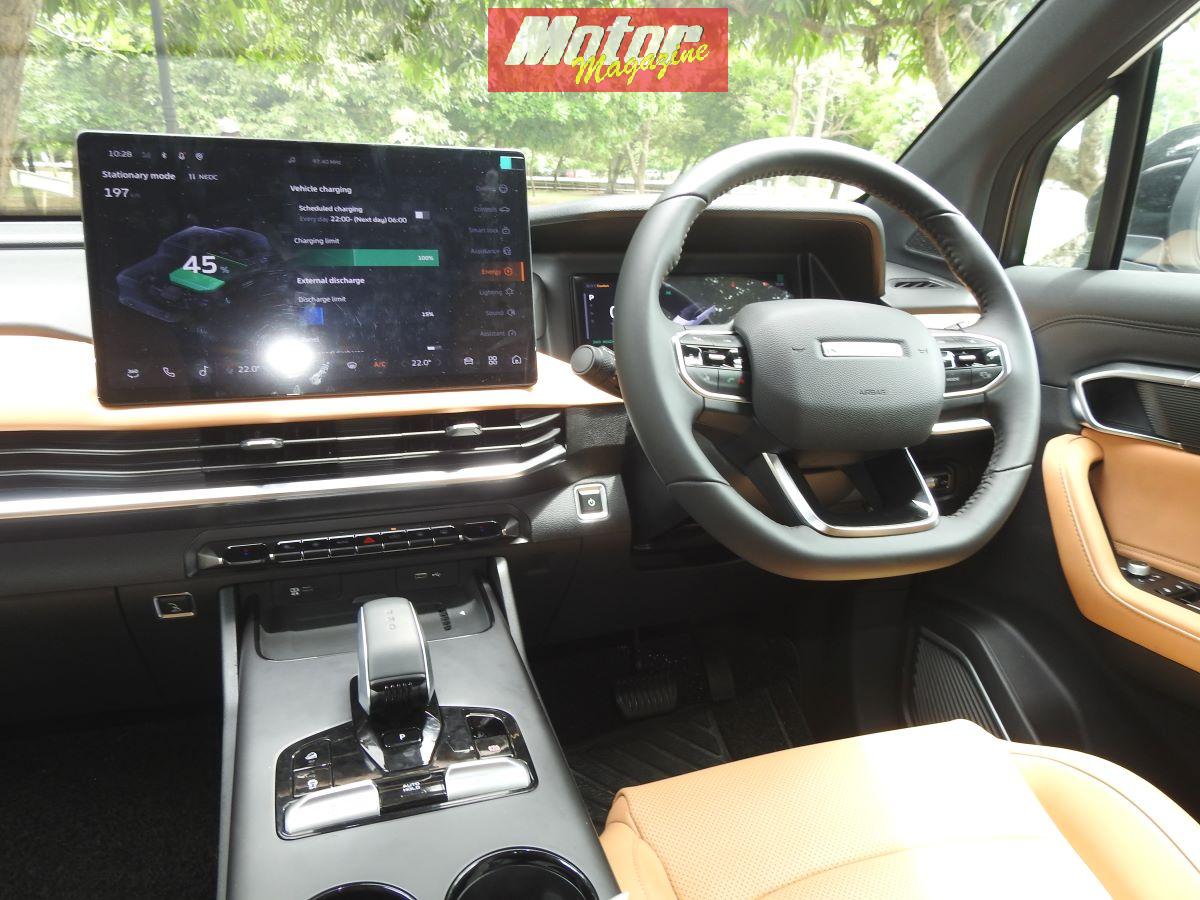
Curious, I decide to launch it. I set the seven-mode drive selector into Sport (which automatically enables 4WD too), left foot firmly on brake, and right foot full on throttle. Some EVs I’ve tested didn’t do anything until I’d lifted off the brake but not the RD6. As soon as I applied throttle, I felt the vehicle strain against the brakes. Lift off the brakes and the surge will definitely catch out most non-EV vehicles around. Evolution Auto rates the 2WD variant at 10.4 seconds in the 0-100km/h benchmark. The 4WD variant is said to do it in 10.9 seconds. I feel they’re being a bit conservative here. Mind you, we’re testing with four adults on board!
There are seven driving modes on offer for 4WD variants. This includes the three that 2WD variants come with – namely Economy, Comfort and Sport. The other four modes are Off-Road, Sand, Mud and Wading. Some modes default to 2WD, some are in permanent 4WD and others dynamically swap depending on traction conditions. With 815mm of wading depth, this truck can easily handle flooded roads. Even two-wheel drive variants have 500mm of wading capability. So, I stuck it into off-road mode, switched off the traction control and spiritedly drove it on some moderately deep and loose sand. Even with traction control off, there is some electronic nannying going on – I could feel power being cut here and there to keep me from getting too adventurous, so I couldn’t quite get the ludicrous tail-slides that I wanted. Ah well.
Back in the city, I note that the ride quality of the RD6 is quite impressive – from the driver’s seat. So, to confirm if this is the case in the rear seat, I give Nimal the wheel and settle in the back, accompanied by Mahen. We’re both impressed by the superb ride quality back here – I’m going to go out on a limb and say that the RD6 is the most comfortable pickup truck I’ve ridden in so far. So, it’s probably the best choice for a family, especially if you’ve got picky family members who make a fuss at every little bump or jolt. As for stopping power, you can pick the regen level that suits you the most, and the vehicle blends regen with disc brake action very well.
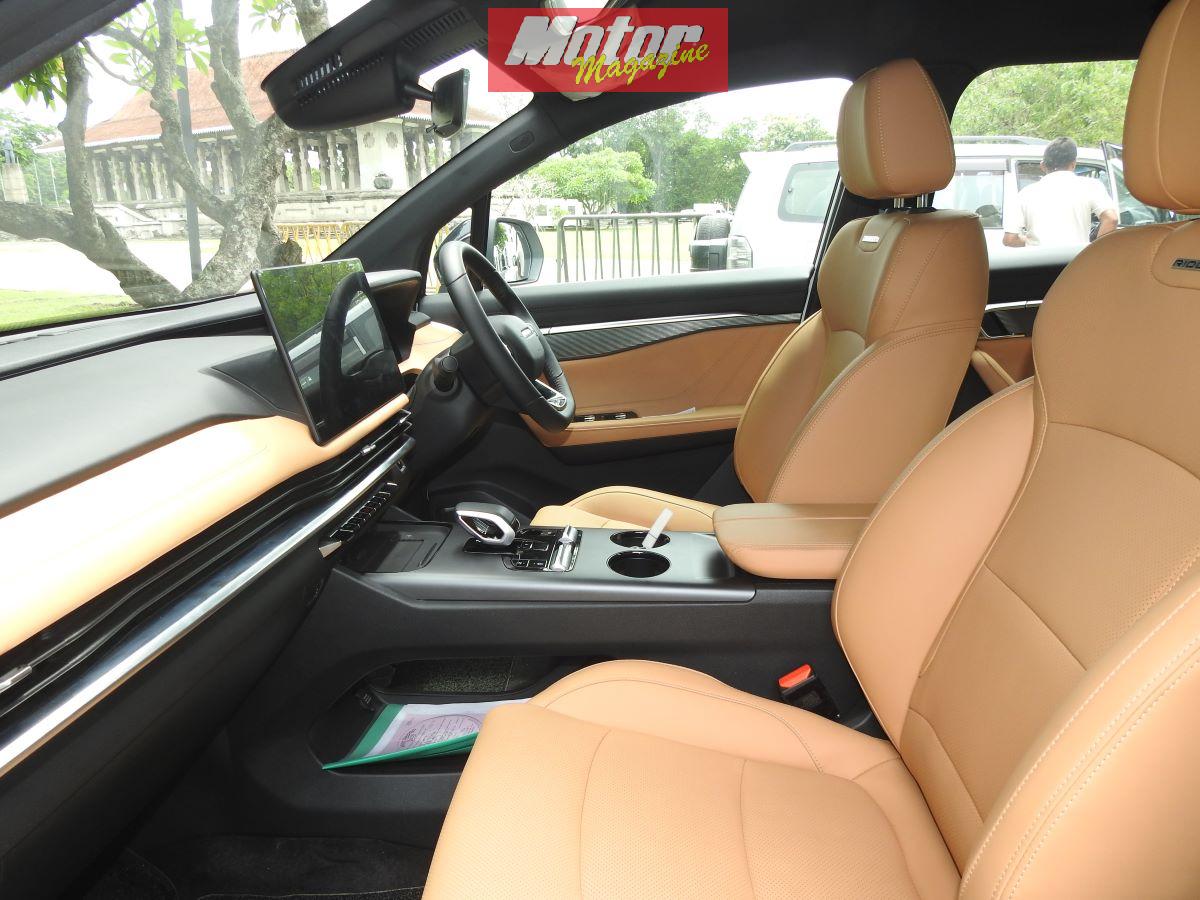
Living with the RD6
The headlining feature of the RD6 has got to be the impressive ride comfort for everyone on board. This is further enhanced by features such as front plus rear ventilated seats, and air vents for rear seat passengers too. There are USB charging ports for front and rear seat passengers as well. However, while rear-seat passengers get buttons for their ventilated seats, front-seat occupants must use the touchscreen to activate their ones. I couldn’t help but wish for buttons instead. Granted, the touchscreen’s interface is fairly intuitive, but it still required several taps on the 12.3-inch infotainment screen to get to the right place. No such issues with the dual-zone automatic climate control system though, or the 8-speaker sound system that sang loud and clear even when all the equalizer and sound effect settings were disabled.
We’ve got smartphone connectivity as expected, plus a 50-watt wireless phone charger to augment the generous complement of charging ports. Voice commands and Wi-Fi connectivity are included too. There’s also a one-touch seat recline feature that can fold both front seats into a near-sleeping position. Meanwhile, the climate control system includes CN95 and PM2.5 filtering capabilities, which is great for those days of heavy pollution.
Before we check out the cargo bed, let’s see what’s
available on board. You’ve got your typical combo of glove-box and centre
console bin storage areas. Then, you’ll find some storage beneath the front
centre console too. But there’s additional hidden storage beneath the rear
seats, 48 litres of it. This is more than enough to stash valuables such as
your wallet and mobile phone if you go to the beach, for example.
Since the RD6 is an EV, it has a front trunk or frunk, with 70 litres of storage capacity. But the most prominent cargo area is its truck bed. It’s open to the elements of course, but I am sure that aftermarket avenues for lockable and weatherproof covers are available. Evolution Auto tells me that the truck bed can hold 1,200 litres of cargo. Most impressively, it offers a payload of 1,030 kilograms regardless of trim. If that’s not enough, you can tow 2,500 kilograms of trailer behind the 2WD variant. The 4WD variant ups this to 3,000 kilograms.
Finally, there’s a 6-kilowatt power inverter on board, with a power board located in the right-hand corner of the truck bed. Open the lid and you’ll find two 12-volt/120-watt power sockets, plus four 16-ampere household power sockets. Yes, the RD6 has V2L (Vehicle To Load) capability, so in case of a power cut, you can use it to power your home.
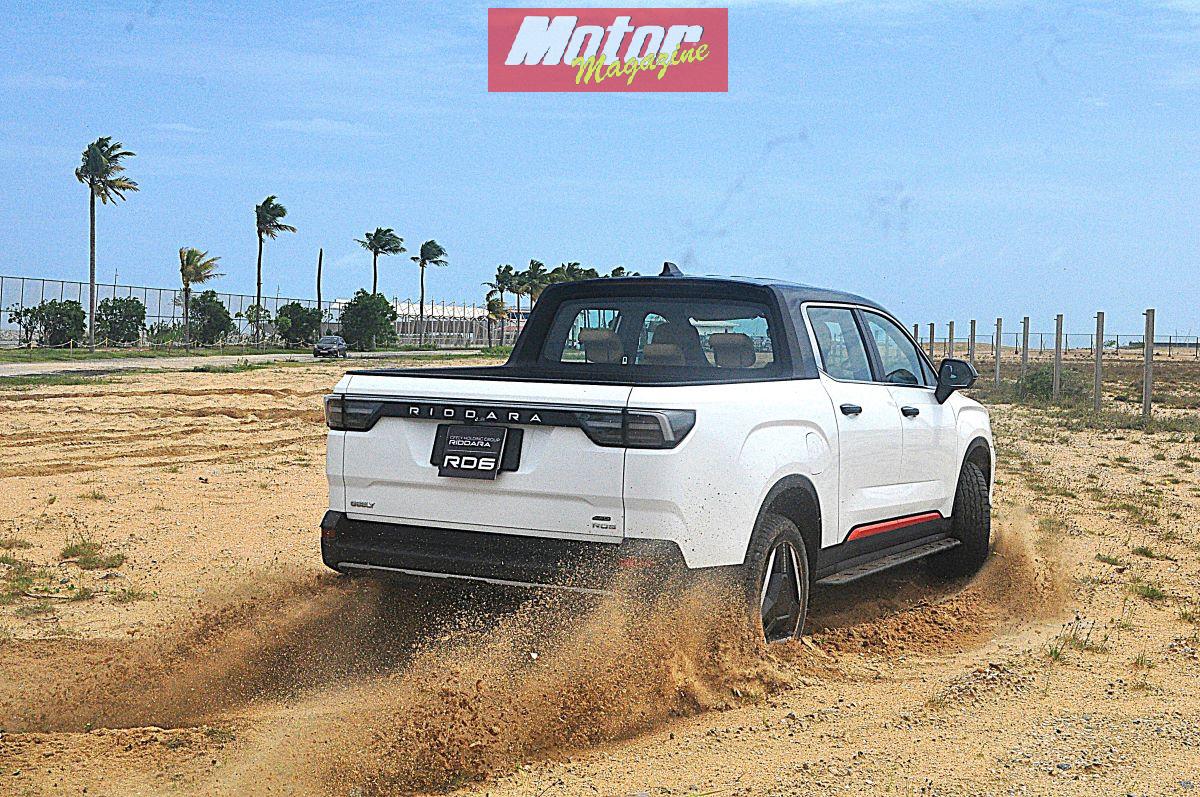
Safety and ADAS features
The Riddara RD6 comes with an impressive suite of ADAS and safety features. Our 4WD tester features a 540-degree surround-view camera system that includes birds-eye, as well as underbody views. The latter is great for off-roading as you can easily see what’s beneath your vehicle, as well as directly ahead of it. Then, we’ve got intelligent cruise control, lane-keeping assist, automatic emergency braking, forward collision warning, traction control, hill descent control and hill hold control. Up to six airbags keep occupants protected depending on variant, and there’s also a tire pressure monitor for 4WD variants. All variants also get ISOFIX child seat anchors.
Range
Evolution Auto quote the range of the 2WD variant with the 63 kilowatt-hour battery at 373 kilometres. Choosing the larger 73 kilowatt-hour battery ups the range to an impressive 461 kilometres. Meanwhile, 4WD variants only come with the larger battery, and a range of 424 kilometres. Charging can be accomplished via the provided 6.6-kilowatt hour home charger, or at a DC fast charging station.
Price and Warranty
The Riddara RD6 range starts at a special introductory price of Rs. 17,995,000 for the 2WD variant with the smaller battery pack. Opting for the larger battery pack means you’ll pay Rs. 19,995,000. Choosing 4WD brings the cost up to Rs. 21,900,000. Plus, if you want a sunroof in your 4WD RD6, you’ll have to pay a total of Rs. 22,300,000. All prices are correct at the time of writing. Regardless of variant, Evolution Auto provides a 5-year / 150,000-kilometre warranty on the entire vehicle, and an 8-year / 200,000-kilometre warranty on the battery.
Final Words
Electric pickup trucks are slowly becoming commonplace. It’s interesting to see how a segment that was once defined by stout turbodiesel engines, workmanlike cabins and moderate off-road capability is being taken over by electric mobility. I can’t comment on the off-road aspect much as I didn’t take through anything tough, but I can say that in terms of torque and interior comfort, the RD6 ticks all the boxes. It’s definitely worth considering as a family vehicle due to its plush ride for a pickup truck too. I do wish we got a bit more power, but that’s pretty much out of Evolution Auto’s hands, or the RD6’s price would skyrocket.




.jpg)